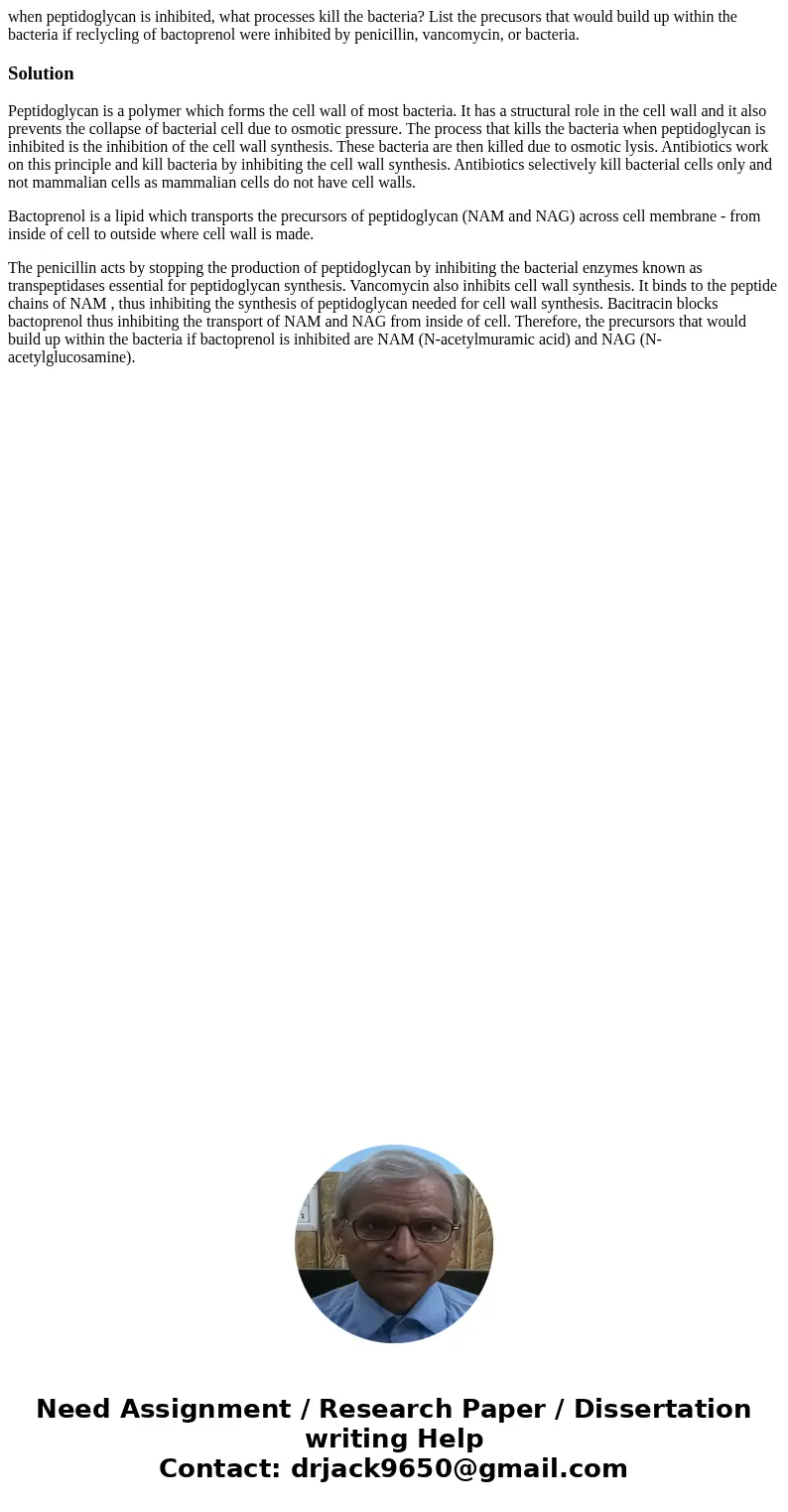when peptidoglycan is inhibited what processes kill the bact
when peptidoglycan is inhibited, what processes kill the bacteria? List the precusors that would build up within the bacteria if reclycling of bactoprenol were inhibited by penicillin, vancomycin, or bacteria.
Solution
Peptidoglycan is a polymer which forms the cell wall of most bacteria. It has a structural role in the cell wall and it also prevents the collapse of bacterial cell due to osmotic pressure. The process that kills the bacteria when peptidoglycan is inhibited is the inhibition of the cell wall synthesis. These bacteria are then killed due to osmotic lysis. Antibiotics work on this principle and kill bacteria by inhibiting the cell wall synthesis. Antibiotics selectively kill bacterial cells only and not mammalian cells as mammalian cells do not have cell walls.
Bactoprenol is a lipid which transports the precursors of peptidoglycan (NAM and NAG) across cell membrane - from inside of cell to outside where cell wall is made.
The penicillin acts by stopping the production of peptidoglycan by inhibiting the bacterial enzymes known as transpeptidases essential for peptidoglycan synthesis. Vancomycin also inhibits cell wall synthesis. It binds to the peptide chains of NAM , thus inhibiting the synthesis of peptidoglycan needed for cell wall synthesis. Bacitracin blocks bactoprenol thus inhibiting the transport of NAM and NAG from inside of cell. Therefore, the precursors that would build up within the bacteria if bactoprenol is inhibited are NAM (N-acetylmuramic acid) and NAG (N-acetylglucosamine).

 Homework Sourse
Homework Sourse